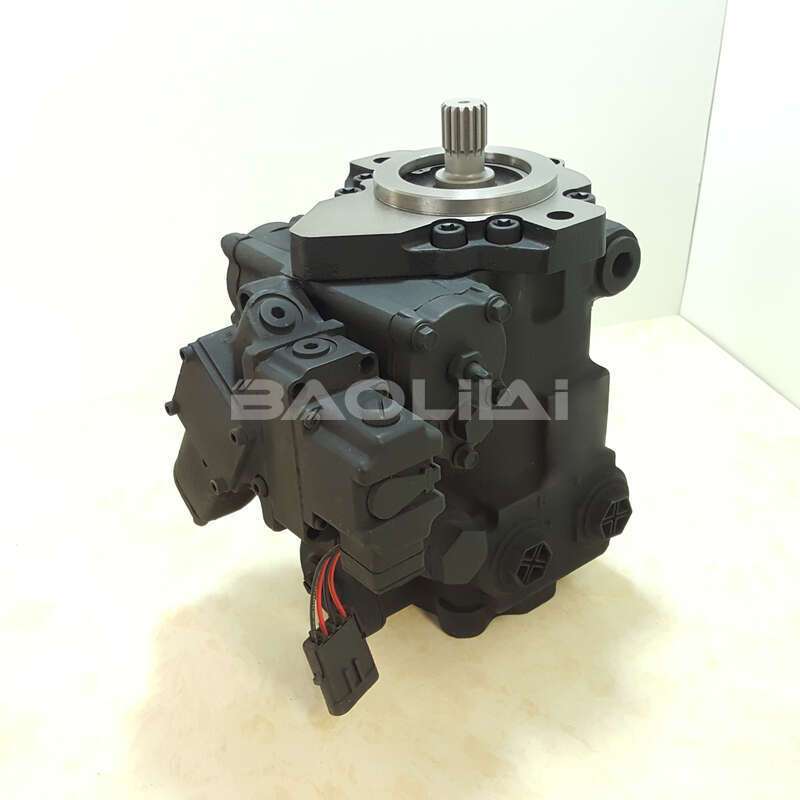BAOLILAI Hydraulic Pump FAQs and Solutions
BAOLILAI Hydraulic Pump FAQs and Solutions
Today, hydraulic systems are widely used in industrial equipment. As the power source of the system, hydraulic pumps play a vital role. BAOLILAI 4352065 hydraulic pumps have been widely used in engineering machinery, agricultural equipment, industrial automation and other fields with their high efficiency, excellent stability and excellent cost performance. In order to help users better use and maintain hydraulic pumps, this article summarizes the common problems encountered by customers in the use of BAOLILAI hydraulic pumps and gives corresponding solutions.
I. Common Problems and Solutions1. Possible reasons for no pressure output after the hydraulic pump is started:
There is air in the oil suction line and the hydraulic pump is not completely exhausted;
Insufficient hydraulic oil level and the liquid level in the oil tank is too low;
Wrong direction at startup, resulting in the pump body being unable to absorb oil normally;
Improper installation and the pump shaft is not properly connected.
Solution:
Check the sealing of the oil suction port and remove the air, and vent the system;
Refill the hydraulic oil to the specified level;
Check the direction of the motor to ensure that it is consistent with the direction of the MPV-035-D-B-A-A-L-S-F-AA-A-A-BGG-DR-A-FF-A-NNN-*** hydraulic pump;
Check the concentricity of the coupling and realign the pump shaft and the drive shaft.

- Possible reasons for abnormal noise and vibration during the operation of the hydraulic pump:
Poor oil suction, air mixed in the oil;
Unsound installation foundation, resonance;
Excessive coupling centering error;
Wear of internal parts of the pump body.
Solution:
Clean the oil suction filter and replace clean hydraulic oil;
Check the base and re-reinforce the installation;
Adjust the installation coaxiality of the motor and pump;
If the internal damage of the pump body is serious, it is recommended to send it for repair or replacement. - Possible reasons why the hydraulic pump pressure cannot be increased:
Incorrect setting of the pressure regulating valve;
Internal leakage of the pump body, wear of the oil distribution plate or plunger;
The opening pressure of the safety valve is too low, and the pressure is released in advance.
Solution:
Reset the parameters of the overflow valve and variable mechanism according to the system requirements;
Check and replace worn parts, such as the plunger, oil distribution plate, etc.;
Adjust or replace the pressure relief valve to ensure that its opening and closing pressure is accurate. - Hydraulic oil temperature rises and the system heats up seriously. Possible reasons:
The design flow of the hydraulic system exceeds the actual carrying capacity of the pump;
Continuous full load operation for a long time;
Cooling system failure, fan does not turn or radiator is blocked.
Solution:
Check whether the total flow matching of the system is reasonable, and replace the high-displacement pump if necessary;
Add a mid-way unloading device or cooling circuit;
Clean the cooler to ensure good ventilation. - Possible reasons for oil leakage at the oil outlet:
Aging or improper installation of the sealing ring;
The oil outlet joint is not tightened or cracked;
There are scratches on the processing surface of the pump body, resulting in poor sealing.
Solution:
Replace high-quality original seals and reinstall the seal rings;
Check and replace the oil outlet pipe joints;
Repair the joint surface or replace damaged parts. - User maintenance recommendations Regularly replace hydraulic oil and filter elements
It is recommended to replace the hydraulic oil and filter element every 1000~1500 hours of operation, and replace the filter element at the same time to maintain the cleanliness of the oil and effectively extend the life of the pump body.
Avoid frequent starting and stopping
Frequent starting and stopping will cause system shock. It is recommended to use slow start control or energy storage device to start the hydraulic pump smoothly.
Check and adjust the concentricity of the coupling
Check the connection condition of the coupling regularly every 3~6 months to prevent vibration and failure caused by eccentric wear.
Keep a good work record and inspection system
Record the operating hours, maintenance content, temperature and pressure changes of the hydraulic pump and other data to provide a basis for fault prediction. - After-sales service support BAOLILAI hydraulic pumps have after-sales service outlets across the country, providing:
Remote video guidance for installation and maintenance;
Technical personnel on-site support;
Original spare parts supply guarantee;
User training courses and manuals.
Users can report repairs, consult and provide feedback through hotlines, emails or official WeChat platforms, and enjoy efficient and professional service guarantees.
Conclusion High-performance hydraulic pumps require not only good manufacturing processes, but also scientific use and maintenance. By mastering the methods to deal with common problems of BAOLILAI hydraulic pumps, users can significantly reduce downtime during operation and improve the overall efficiency and life of the equipment. In the future, BAOLILAI will continue to adhere to customer-centricity and provide users in various industries with more reliable, efficient and considerate hydraulic solutions and service support.
This article is published by the official website of Baolilai Hydraulics, please contact the author and indicate the source for reprinting:https://www.baolilai-pump.com/news/view-3941.html


